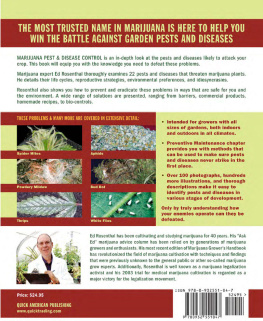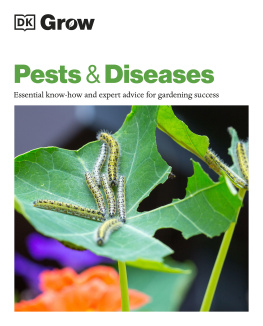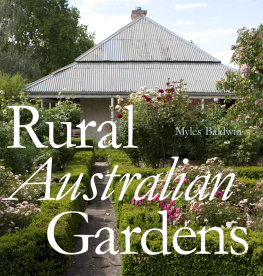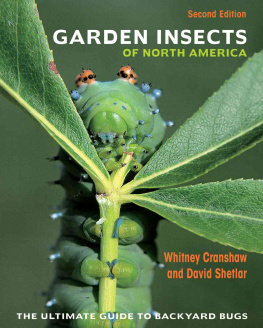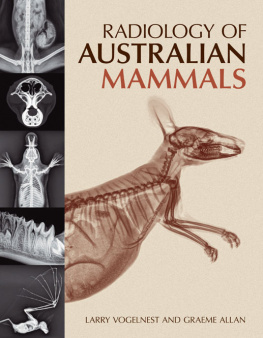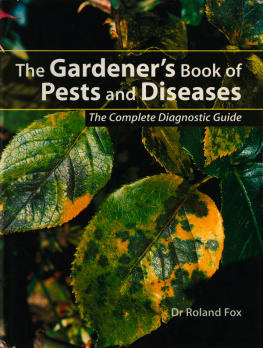CSIRO. - Pests, diseases and beneficials friends and foes of Australian gardens
Here you can read online CSIRO. - Pests, diseases and beneficials friends and foes of Australian gardens full text of the book (entire story) in english for free. Download pdf and epub, get meaning, cover and reviews about this ebook. City: Australia;Melbourne, year: 2014, publisher: CSIRO PUBLISHING, genre: Children. Description of the work, (preface) as well as reviews are available. Best literature library LitArk.com created for fans of good reading and offers a wide selection of genres:
Romance novel
Science fiction
Adventure
Detective
Science
History
Home and family
Prose
Art
Politics
Computer
Non-fiction
Religion
Business
Children
Humor
Choose a favorite category and find really read worthwhile books. Enjoy immersion in the world of imagination, feel the emotions of the characters or learn something new for yourself, make an fascinating discovery.

- Book:Pests, diseases and beneficials friends and foes of Australian gardens
- Author:
- Publisher:CSIRO PUBLISHING
- Genre:
- Year:2014
- City:Australia;Melbourne
- Rating:3 / 5
- Favourites:Add to favourites
- Your mark:
- 60
- 1
- 2
- 3
- 4
- 5
Pests, diseases and beneficials friends and foes of Australian gardens: summary, description and annotation
We offer to read an annotation, description, summary or preface (depends on what the author of the book "Pests, diseases and beneficials friends and foes of Australian gardens" wrote himself). If you haven't found the necessary information about the book — write in the comments, we will try to find it.
CSIRO.: author's other books
Who wrote Pests, diseases and beneficials friends and foes of Australian gardens? Find out the surname, the name of the author of the book and a list of all author's works by series.
Pests, diseases and beneficials friends and foes of Australian gardens — read online for free the complete book (whole text) full work
Below is the text of the book, divided by pages. System saving the place of the last page read, allows you to conveniently read the book "Pests, diseases and beneficials friends and foes of Australian gardens" online for free, without having to search again every time where you left off. Put a bookmark, and you can go to the page where you finished reading at any time.
Font size:
Interval:
Bookmark:
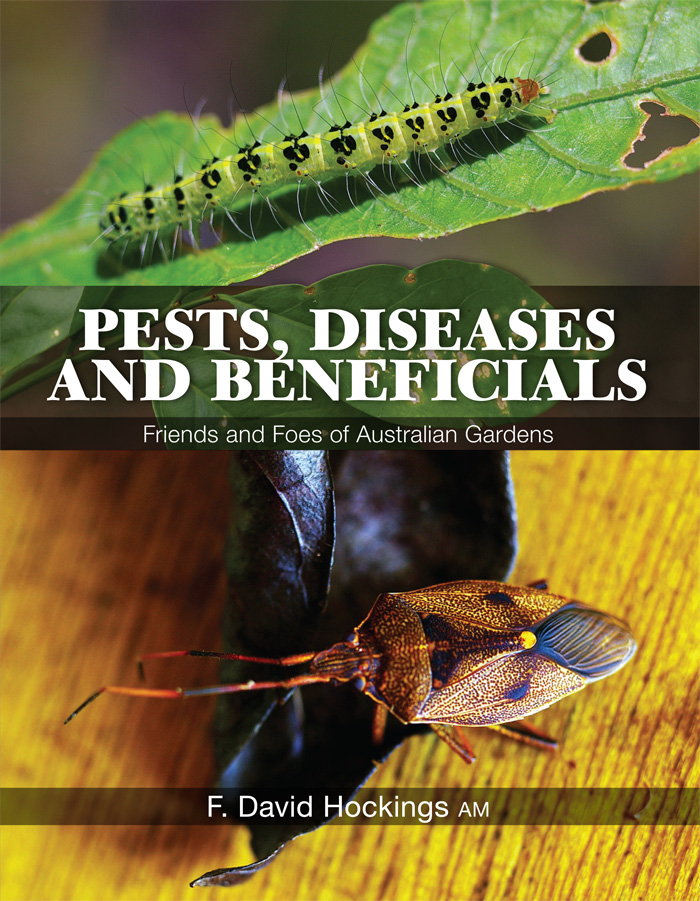

 FD Hockings 2014 All rights reserved. Except under the conditions described in the Australian Copyright Act 1968 and subsequent amendments, no part of this publication may be reproduced, stored in a retrieval system or transmitted in any form or by any means, electronic, mechanical, photocopying, recording, duplicating or otherwise, without the prior permission of the copyright owner. Contact CSIRO PUBLISHING for all permission requests. National Library of Australia Cataloguing-in-Publication entry Hockings, F. (Francis David) author. (Francis David) author.
FD Hockings 2014 All rights reserved. Except under the conditions described in the Australian Copyright Act 1968 and subsequent amendments, no part of this publication may be reproduced, stored in a retrieval system or transmitted in any form or by any means, electronic, mechanical, photocopying, recording, duplicating or otherwise, without the prior permission of the copyright owner. Contact CSIRO PUBLISHING for all permission requests. National Library of Australia Cataloguing-in-Publication entry Hockings, F. (Francis David) author. (Francis David) author. Pests, diseases and beneficials : friends and foes of Australian gardens/by F. David Hockings. 9781486300211 (paperback) 9781486300228 (epdf) 9781486300235 (epub) Includes index. Garden ecology Australia. Plant diseases Environmental aspects Australia. Beneficial insects Environmental aspects Australia.
Garden pests Environmental aspects Australia. 632.0994 Published by CSIRO PUBLISHING 150 Oxford Street (PO Box 1139) Collingwood VIC 3066 Australia Telephone: +61 3 9662 7666 Local call: 1300 788 000 (Australia only) Fax: +61 3 9662 7555 Email: publishing.sales@csiro.au Website: www.publish.csiro.au Front cover: Hibiscus caterpillar (top), bacterial spot on Brunsfelsia (middle), brown predatory bug (bottom) Back cover: Bees in flowers (left), bronze orange bug (right) Set in Palatino 11/14 and Myriad Pro Edited by Joy Window Cover and text design by Andrew Weatherill Typeset by Desktop Concepts Pty Ltd, Melbourne Index by Indexicana Printed in China by 1010 Printing International Ltd CSIRO PUBLISHING publishes and distributes scientific, technical and health science books, magazines and journals from Australia to a worldwide audience and conducts these activities autonomously from the research activities of the Commonwealth Scientific and Industrial Research Organisation (CSIRO). The views expressed in this publication are those of the author(s) and do not necessarily represent those of, and should not be attributed to, the publisher or CSIRO. The copyright owner shall not be liable for technical or other errors or omissions contained herein. The reader/user accepts all risks and responsibility for losses, damages, costs and other consequences resulting directly or indirectly from using this information. Original print edition: The paper this book is printed on is in accordance with the rules of the Forest Stewardship Council.
The FSC promotes environmentally responsible, socially beneficial and economically viable management of the worlds forests.
I also acknowledge Lance Warrell and Merv Whitehouse of the DPI Soil Chemistry Laboratory, who patiently enlightened me about the world of soil chemistry, plant nutrition and physiological disorders, Ian Hughes, Plant Pathologist, the master of plant problem diagnosis and Bob Colbran, Nematologist, who introduced me to the world around the roots of plants. I am deeply indebted to my wonderful family for their encouragement and assistance with preparation of this manuscript. I acknowledge my wife, Olive, for support and proofreading, and in particular my daughter, Cecily, and son-inlaw, John Daniels, for their extensive help with the computer and the solving of photographic problems of scanning, storage and retrieval. Cecily has been a tower of strength through a major health crisis. Daughter Lindy I particularly thank for very capably helping out with drawings when photographic subjects were not immediately available; and my son, Colin, for his help in locating difficult photograph subjects. Finally I acknowledge Bill Mollineux for his patience and persistence, which ensured that finally the manuscript was completed.
Photographic/art credits: Bob Luttrell 189c, 191b, 192 Olive Hockings 113, 231, 342 Lindy Wieland 123c, 237, 259, 274, 328b, 328c Colin Hockings 193b, 193c, 283a, 327, 344 John Daniels 368 Percy Hockings 65a
As bugs have piercing and sucking mouthparts, they cannot take even the tiniest bite out of a leaf. I was hard pressed to sit calmly. This general lack of basic understanding was quite obvious in the television programs of the time, with presenters continually recommending the magic new pesticide Rogor for fungal, pest and all other plant disorders. Quite obviously the professionals of the day, as well as the gardening public, were struggling to understand, identify and classify the many small garden creatures. Containers of pesticides and their advertising did not differentiate between pests, harmless or beneficial creatures the attitude was if it moves, spray it. I committed myself to doing something about this.
In this book I have attempted to provide illustrations of a comprehensive cross-section of the various small creatures that can be found in the average garden, to serve as a general guide to all garden and plant situations everywhere. Equivalent species with similar life cycles and feeding habits occur throughout this country and with, in some cases, climatic modifications, also in overseas countries. In order to examine and identify small animals, a magnifying glass (10 or 20) is essential. The small mites, such as the broad mite, cyclamen mite and brevipalpid mite, require 20. For easy reference I have attempted to group creatures according to where on plants or in the surroundings they are most likely to be encountered: leaves and shoots, stems, trunks, soil, compost, and so on. Unfortunate and confusing colloquialisms such as referring to all small creatures as bugs or using the term worms for worms, caterpillars and maggots, has largely been avoided.
Font size:
Interval:
Bookmark:
Similar books «Pests, diseases and beneficials friends and foes of Australian gardens»
Look at similar books to Pests, diseases and beneficials friends and foes of Australian gardens. We have selected literature similar in name and meaning in the hope of providing readers with more options to find new, interesting, not yet read works.
Discussion, reviews of the book Pests, diseases and beneficials friends and foes of Australian gardens and just readers' own opinions. Leave your comments, write what you think about the work, its meaning or the main characters. Specify what exactly you liked and what you didn't like, and why you think so.

